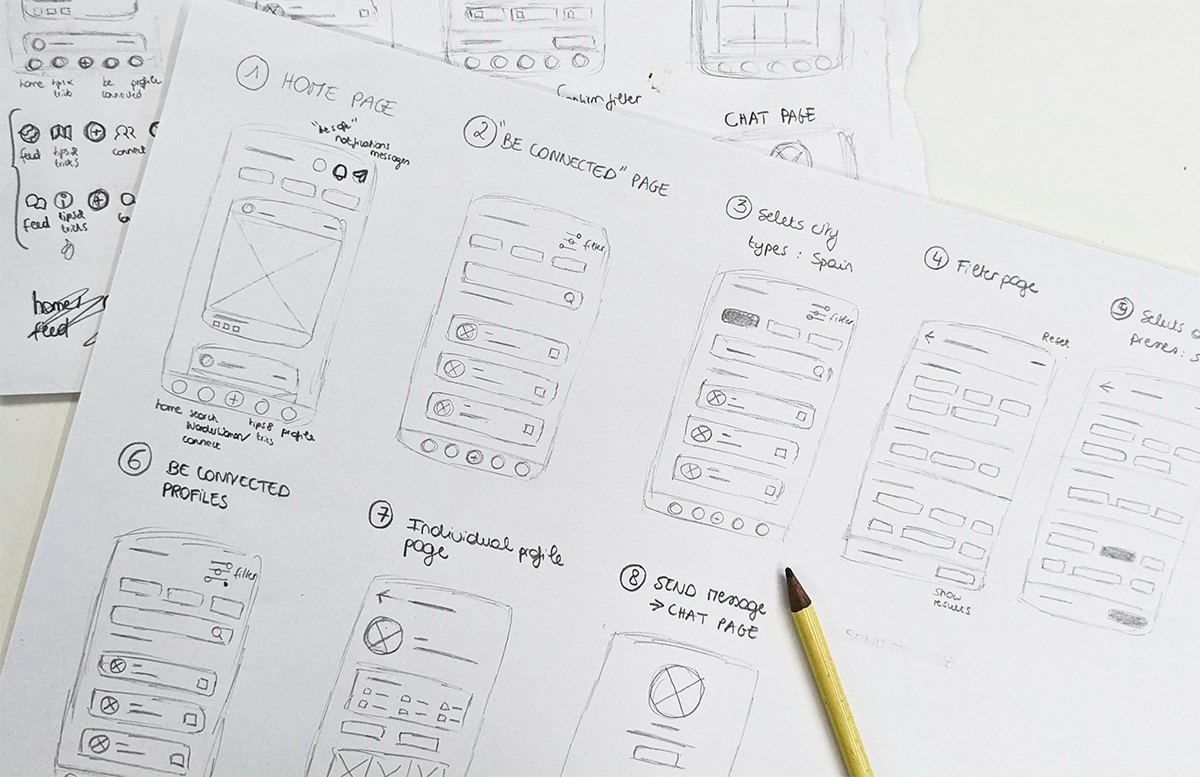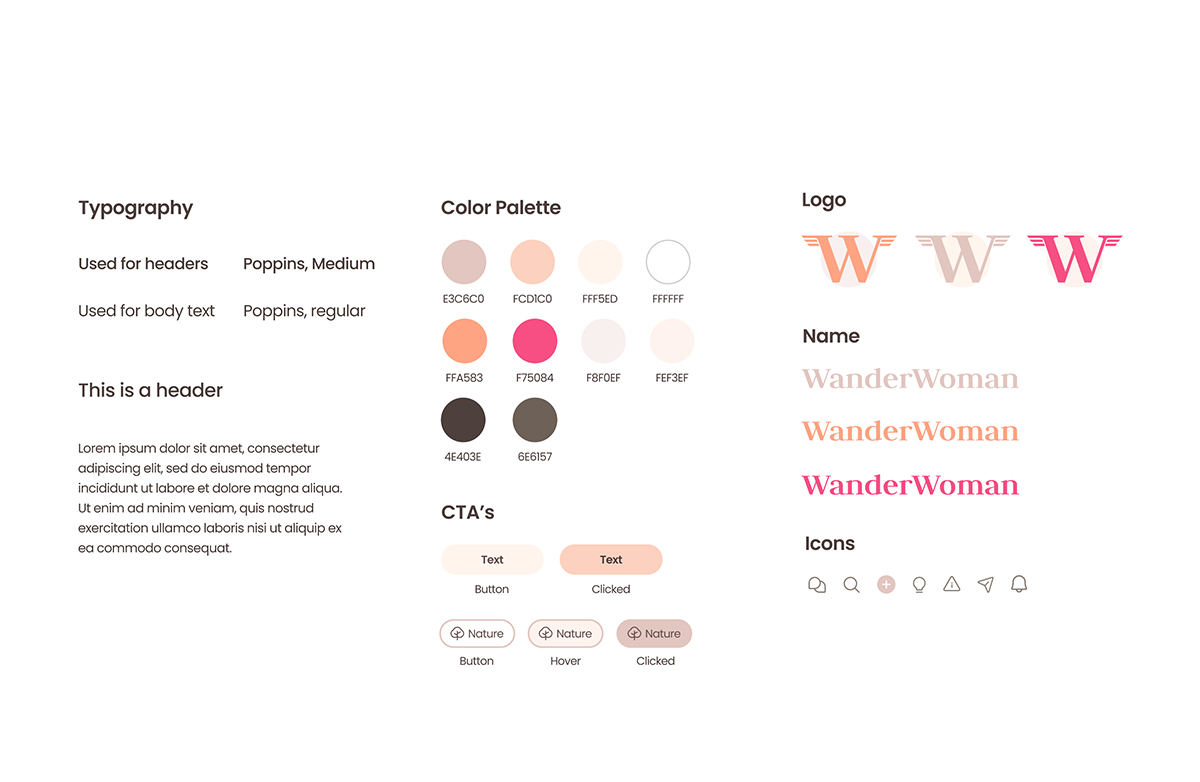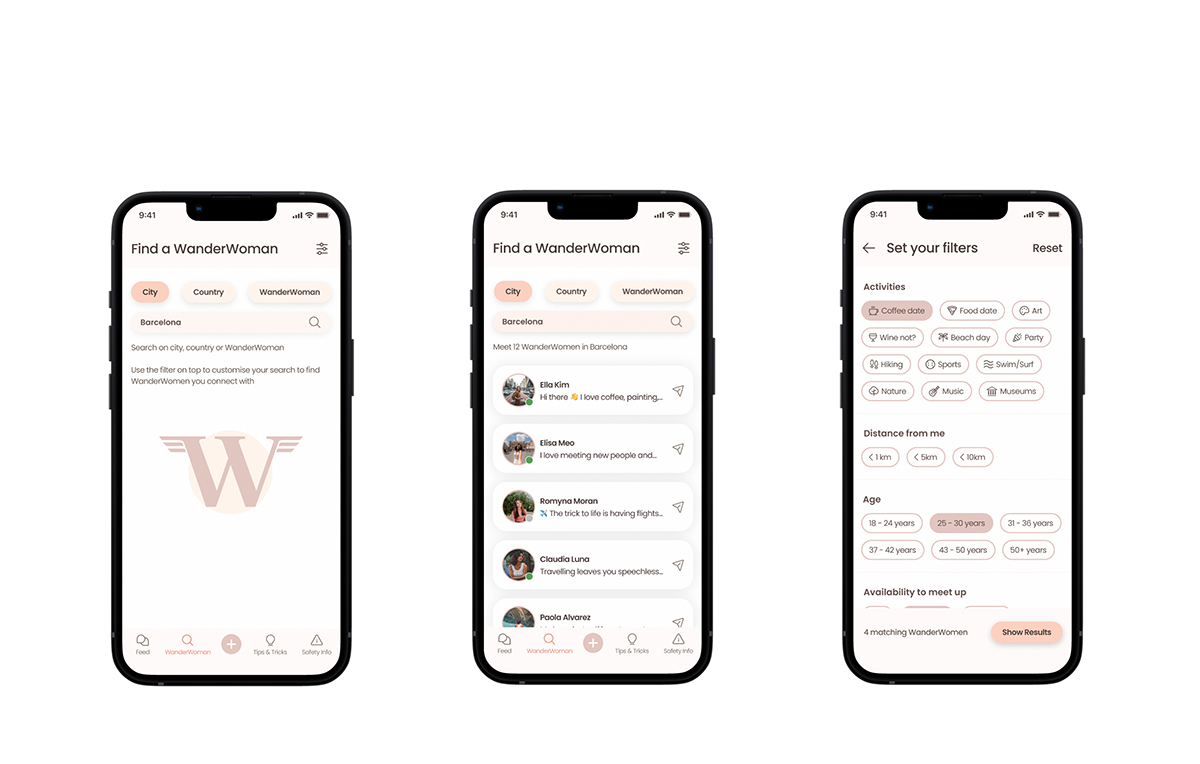
Being one of the most creative fields in IT, User Experience Design, commonly known as UX Design is one of the best paths for people who want to be in tech but are not software engineers. It's an amazing combination of science, research and art allowing designers to construct and create beautiful products for millions of people to enjoy.
But what exactly is UX design, and what is it like to be a UX designer?
In this article, we will try to understand the meaning of UX design, explore the steps of the UX design process, see the difference between UX and UI design, outline the typical tasks of a UX designer, explore the job prospects in this field, identify the personality traits and skills that make one suitable for becoming a UX designer, and highlight the soft and hard skills that are important for success in this field.
What is User Experience Design?
Have you ever noticed that some apps you use daily are clear, intuitive and enjoyable to use? You know what to click when you need something and where to look for any feature you need. On the other hand, some apps are so confusing and difficult to use, the features you need are hard to find and you get annoyed when you can not do what this app is supposed to do? The answer is in good or bad UX Design...
UX Design is the process of creating digital products or services that provide meaningful and relevant experiences to users. UX design involves understanding the needs, preferences, and behaviors of users and designing products that are easy to use, visually appealing, and efficient in achieving their intended goals. The goal of UX design is to enhance user satisfaction and improve the overall user experience by focusing on factors such as usability, accessibility, aesthetics, and functionality.
A UX designer is responsible for creating intuitive and engaging user experiences through various design elements, such as user interfaces (UI), interactions, and visual design. A UX designer works closely with other members of the product development team, such as product managers, developers, and visual designers, to ensure that the final product meets the needs of the target users and aligns with the business goals of the organization.
What are the Steps of UX Design Process?
If we compare programmers to the construction builders, then UX designers are architects. Before we will start programming an app (building) we need to have clear and thought through design (architect blueprints)...
The UX design process typically involves several steps that guide designers in creating effective and user-centered products. The common stages of the UX design process:
Research: The first step in the UX design process is to conduct thorough research to understand the target users, their needs, preferences, and behaviors. This involves conducting user interviews, surveys, and usability testing to gather insights that inform the design decisions.
Analysis: Once the research is completed, the UX designer analyzes the data to identify patterns and trends, and to define the user requirements and design goals. This helps in creating a clear design direction for the project.
Design: Based on the research findings, the UX designer creates wireframes, prototypes, and mockups to visualize the design concepts. These design artifacts help in getting feedback from stakeholders and users, and iterate on the design until a final solution is reached.
Testing: After the design is finalized, the UX designer conducts usability testing to evaluate the effectiveness and efficiency of the design in meeting the user requirements. This helps in identifying any design flaws and making necessary adjustments to improve the user experience.
Implementation: Once the design is refined based on the testing feedback, the UX designer works closely with the development team to implement the final design. This involves providing design specifications, collaborating with developers, and conducting quality assurance to ensure that the design is accurately implemented.
Evaluation: After the product is launched, the UX designer evaluates the user feedback and conducts post-launch testing to measure the success of the design in meeting the user needs and business goals. This helps in continuously improving the product and refining the design for future iterations.
What is the Difference between UX and UI Design?

If a product looks nice, UI designer did a great job. But if it feels good to use, everything is easy and working as you expect it to be, that's a UX designer's achievement...

UX design and UI design are often used interchangeably, but they are not the same. While both are related to the user experience of a product, they have distinct roles and responsibilities.
UI design, or User Interface design, focuses on the visual and interactive elements of a product, such as buttons, icons, menus, and screens. UI designers are responsible for creating visually appealing and functional interfaces that users interact with. They work on the layout, typography, color schemes, and visual elements that make up the overall look and feel of a product. UI designers also ensure that the interface is easy to navigate, visually consistent, and visually communicates the purpose and functionality of different elements.
On the other hand, UX design is a broader field that encompasses the entire user experience of a product or service. UX designers are responsible for understanding the needs and behaviors of users and creating seamless, enjoyable, and meaningful experiences through various design elements, including the user interface. They focus on research, usability, information architecture, and interaction design to ensure that the product is user-friendly, efficient, and meets the needs of the target users.
In essence, UI design is a subset of UX design, where UI designers focus on the visual aspects of a product, while UX designers have a holistic approach that encompasses the entire user experience, including both the visual and functional aspects of a product.
What are the Typical Tasks of a UX designer?
Understanding the problem, researching and talking to the users, ideation, structuring information and, wireframing, designing UI, prototyping, validating, testing, iterating and continuously improving...
As a UX designer, you will have a wide range of tasks that are aimed at creating a user-centered and effective product. Some of the typical tasks of a UX designer include:
User Research: Conducting user interviews, surveys, and usability testing to gather insights into user needs, preferences, and behaviors.
Information Architecture: Creating the structure and organization of content and features in a product to ensure easy navigation and findability for users.
Interaction Design: Designing the interactions and flows that users will follow to complete tasks or achieve their goals in the product.
Wireframing and Prototyping: Creating visual representations of the design concepts through wireframes and prototypes to gather feedback and iterate on the design.
Visual Design: Collaborating with UI designers to create visually appealing interfaces that align with the overall design direction and brand identity.
Usability Testing: Conducting usability testing to evaluate the effectiveness and efficiency of the design and identifying areas of improvement.
Collaboration: Working closely with other members of the product development team, such as product managers, developers, and visual designers, to ensure that the final product meets the user requirements and business goals.
Continuous Improvement: Evaluating user feedback and post-launch data to continuously improve the product and refine the design for future iterations.
What are the Job Prospects of UX designers?
The job market is growing as more and more companies realizing the crucial role of UX design in making sure that the product will not disappoint users and saving costs thanks to thorough research before the release...
The field of UX design has been rapidly growing, and the job prospects for UX designers are very bright. With the increasing focus on creating user-centered products and services, there is a high demand for UX designers in various industries, including technology, finance, healthcare, e-commerce, and entertainment.
The growth in demand for the UX designers growth is driven by the increasing need for organizations to create user-friendly and efficient digital products to meet the changing needs and expectations of users.
Moreover, as the importance of UX design is recognized across industries, the job prospects for UX designers are not limited to traditional technology companies. Many companies in diverse industries are hiring UX designers to improve their products and services, making the field of UX design a versatile and promising career choice.
What Type of Personality is Most Suitable for Becoming a UX designer?
While we have students coming from all sorts of backgrounds to take the UX / UI Design Bootcamp, if we can outline some of the most beneficial personality traits they would be empathy, curiosity, creativity, flexibility and willingness to listen and take feedback in a productive way...
Some of the personality traits that are typically associated with successful UX designers include:
Empathy: UX designers need to have empathy towards users and understand their needs, preferences, and behaviors. Being able to put yourself in the shoes of the users and truly understand their perspective is crucial in creating meaningful user experiences.
Curiosity: UX designers should have a curious mindset, always eager to learn and explore new ideas, technologies, and design trends. Being curious allows UX designers to constantly seek out innovative solutions and stay up-to-date with the latest advancements in the field.
Creativity: UX design is all about finding creative solutions to complex problems. Having a creative mindset allows UX designers to think outside the box, come up with unique design ideas, and create engaging experiences for users.
Communication skills: UX designers need to be able to effectively communicate their design ideas and decisions to stakeholders, including clients, product managers, developers, and other team members. Strong communication skills help in building collaborative relationships and ensuring that everyone is on the same page throughout the design process.
Flexibility: UX design is an iterative process, and designers need to be open to feedback and willing to iterate on their designs. Being flexible and adaptable to changes in requirements, constraints, and feedback from users and team members is essential in creating successful user experiences.
Attention to detail: UX designers need to have a keen eye for detail to ensure that every element of the design contributes to a seamless and delightful user experience. Paying attention to small details, such as micro-interactions, visual consistency, and accessibility, can greatly impact the overall usability of a product.
Patience: UX design can sometimes be a challenging process that requires patience and perseverance. Dealing with complex problems, multiple iterations, and varying stakeholder opinions can be demanding, and having patience is crucial in navigating through the design process with a positive attitude.
Taking criticism in a positive way: While doing the prototype testing sometimes designer can see that their idea doesn't work, users are confused or not satisfied. This feedback should not be taken as an offense but rather as a valuable input to improve the product during the design stage instead of releasing flawed product to the market.

Wrapping it up
To sum it up, being a UX designer involves creating meaningful and delightful user experiences through a user-centered design process. It requires a combination of technical skills, creative thinking, empathy, and effective communication.
UX designers need to understand the needs and behaviors of users, collaborate with cross-functional teams, and create intuitive and visually appealing designs. With the increasing demand for user-centered products and services, the job prospects for UX designers are promising.
So, if you are a creative problem solver with a passion for understanding users and creating impactful experiences, a career in UX design might be the right fit for you!
Our UX / UI Design Bootcamp offers a straightforward way to learn all the practical skills and land a job after graduation. It's a 9-week intensive hands-on full-time in-person experience to prepare you for starting a job as a UX designer. You will end with a portfolio of 2 complete projects – a group and individual one – and, what's more important, will be taken to the job-ready level.
Looking forward to see you in Barcelona Code School!
PS: Check out some of our graduates projects done during the bootcamp.